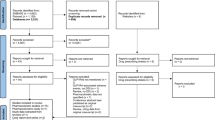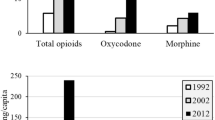Abstract
Purpose
In this study, the drug-drug interaction potential of vatiquinone with cytochrome P450 (CYP) substrates was investigated in both in vitro and clinical studies.
Methods
The inhibitory potential of vatiquinone on the activity of CYPs 1A2, 2B6, 2C8, 2C9, 2C19, 2D6, and 3A4/5 was assessed in vitro. In an open-label, drug-drug interaction study in 18 healthy human subjects, a single oral dose of 500 mg tolbutamide and 40 mg omeprazole was administered on day 1, followed by a washout of 7 days. Multiple oral doses of 400 mg vatiquinone (three times a day [TID]) were administered from day 8 to day 13 with coadministration of a single oral dose of 500 mg tolbutamide and 40 mg omeprazole on day 12.
Results
In vitro, vatiquinone inhibited CYP2C9 (IC50 = 3.7 µM) and CYP2C19 (IC50 = 5.4 µM). In the clinical study, coadministration of vatiquinone did not affect the pharmacokinetic (PK) profile of tolbutamide and omeprazole. The 90% confidence intervals (CIs) of geometric least-square mean ratios for maximum plasma concentration (Cmax), areas under the plasma concentration–time curve (AUC0-t), and AUC0-inf of tolbutamide and omeprazole were entirely contained within the 80 to 125% no effect limit, except a minor excursion observed for Cmax of omeprazole (geometric mean ratio [GMR], 94.09; 90% CI, 78.70–112.50). Vatiquinone was generally well tolerated, and no clinically significant findings were reported.
Conclusion
The in vitro and clinical studies demonstrated vatiquinone has a low potential to affect the pharmacokinetics of concomitantly administered medications that are metabolized by CYP enzymes.



Similar content being viewed by others
Data availability
The data that support the findings of this study are available from the corresponding author, MT, upon reasonable request.
References
Blankenberg FG, Kinsman SL, Cohen BH et al (2012) Brain uptake of Tc99m-HMPAO correlates with clinical response to the novel redox modulating agent EPI-743 in patients with mitochondrial disease. Mol Genet Metab 107(4):690–699. https://doi.org/10.1016/j.ymgme.2012.09.023
Ye L, Stockwell B (2017) Transforming lipoxygenases: PE-specific enzymes in disguise. Cell 171:501–502. https://doi.org/10.1016/j.cell.2017.10.006
Joshi YB et al (2015) The 12/15-lipoxygenase as an emerging therapeutic target for Alzheimer’s disease. Trends Pharmacol Sci 36(3):181–186. https://doi.org/10.1016/j.tips.2015.01.005
Enns GM et al (2012) Initial experience in the treatment of inherited mitochondrial disease with EPI-743. Mol Genetics Metab 105(1):91–102. https://doi.org/10.1016/j.ymgme.2011.10.009
El-Hattab AW et al (2017) Therapies for mitochondrial diseases and current clinical trials. Mol Genetics Metab 122(3):1–9. https://doi.org/10.1016/j.ymgme.2017.09.009
Zesiewicz T et al (2018) Double-blind, randomized and controlled trial of EPI-743 in Friedreich’s ataxia. Neurodegener Dis Manag 8(4):233–242. https://doi.org/10.2217/nmt-2018-0013
Hinman A et al (2018) Vitamin E hydroquinone is an endogenous regulator of ferroptosis via redox control of 15-lipoxygenase. PLoS One 13(8). https://doi.org/10.1371/journal.pone.0201369
Shrader WD et al (2011) Alpha-tocotrienol quinone modulates oxidative stress response and the biochemistry of aging. Bioorg Med Chem Lett 21(12):3693–3698. https://doi.org/10.1016/j.bmcl.2011.04.085
Martinelli D et al (2012) EPI-743 reverses the progression of the pediatric mitochondrial disease—genetically defined Leigh syndrome. Mol Genetics Metab 107(3):383–388. https://doi.org/10.1016/j.ymgme.2012.09.007
Sadun AA et al (2012) Effect of EPI-743 on the clinical course of the mitochondrial disease Leber hereditary optic neuropathy. Arch Neurol 69(3):331–338. https://doi.org/10.1001/archneurol.2011.2972
Pastore A, Petrillo S, Tozzi G et al (2013) Glutathione: a redox signature in monitoring EPI-743 therapy in children with mitochondrial encephalomyopathies. Mol Genet Metab 109(2):208–214. https://doi.org/10.1016/j.ymgme.2013.03.011
Vieira ML, Kirby B, Ragueneau-Majlessi I et al (2014) Evaluation of various static in vitro-in vivo extrapolation models for risk assessment of the CYP3A inhibition potential of an investigational drug. Clin Pharmacol Ther 95(2):189–198. https://doi.org/10.1038/clpt.2013.187
Haupt LJ et al (2015) The reliability of estimating Ki values for direct, reversible inhibition of cytochrome P450 enzymes from corresponding IC50 values: a retrospective analysis of 343 experiments. Drug Metab Dispos 43(11):1744–1750. https://doi.org/10.1124/dmd.115.066597
FDA (2020) Clinical drug interaction studies – cytochrome P450 enzyme- and transporter-mediated drug interactions: guidance for industry. https://www.fda.gov/media/134582/download. Accessed March 2022
Obach RS et al (1997) The prediction of human pharmacokinetic parameters from preclinical and in vitro metabolism data. J Pharmacol Exp Ther 283(1):46–58
Funding
This work was funded by PTC Therapeutics, Inc.
Author information
Authors and Affiliations
Contributions
MT and KM conceptualized the study. KM, JM, and MT contributed to the in vitro DDI study design and data analysis. MT contributed to the clinical DDI study design and data analysis and managed the project. KM wrote the first draft of the paper. RB assisted with writing of the paper. KM, LL, JM, RB, and MT contributed to and approved the final version of the manuscript.
Corresponding author
Ethics declarations
Ethics approval
The study was conducted at Bio-Kinetic Clinical Applications, LLC (BKCA, Springfield, MO). The study protocol was approved by the institute’s review board (BKCA). The study was performed in accordance with Good Clinical Practice and the Declaration of Helsinki.
Consent to participate
Informed consent was obtained from all individual participants included in the study.
Conflict of interest
KM, LL, JM, RB, and MT are employed by PTC Therapeutics, Inc., and have received salary compensation for time and effort and hold financial interest in the company.
Additional information
Publisher's Note
Springer Nature remains neutral with regard to jurisdictional claims in published maps and institutional affiliations.
Supplementary Information
Below is the link to the electronic supplementary material.
Rights and permissions
Springer Nature or its licensor holds exclusive rights to this article under a publishing agreement with the author(s) or other rightsholder(s); author self-archiving of the accepted manuscript version of this article is solely governed by the terms of such publishing agreement and applicable law.
About this article
Cite this article
Murase, K., Lee, L., Ma, J. et al. Evaluation of vatiquinone drug-drug interaction potential in vitro and in a phase 1 clinical study with tolbutamide, a CYP2C9 substrate, and omeprazole, a CYP2C19 substrate, in healthy subjects. Eur J Clin Pharmacol 78, 1823–1831 (2022). https://doi.org/10.1007/s00228-022-03393-0
Received:
Accepted:
Published:
Issue Date:
DOI: https://doi.org/10.1007/s00228-022-03393-0




